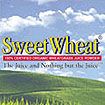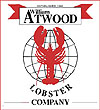Some Americans Eat Like Ancient Aztecs and Andeans,
Gluten Free!
By
Candice Choi
The Associated Press
ALBANY,
N.Y. (AP)-Amid the aisles of spaghetti
and canned peas, cereals and breads made with
mysterious-sounding grains like amaranth and quinoa
are sprouting up at major supermarkets.
Wheat
is still king of this country's whole grains,
but the appearance of such alternatives indicates
consumers are beginning to expand a niche market
once relegated to the obscure corners of health
food stores.
"People
are realizing there's a benefit to eating a diversity
of grains-and these grains have some incredible
nutritional properties,'' said Carole Fenster,
an author of numerous cookbooks that incorporate
wheat-free grains.
Grain
of Truth
A look at the nutritional profiles of whole grains
per 100 grams:
Wheat
* Fiber, 12.2 grams
* Protein, 13.7 grams
* Iron, 3.8 grams
Amaranth
* Fiber, 15.2 grams
* Protein, 14.5 grams
* Iron, 7.6 grams
Quinoa
* Fiber, 6 grams
* Protein, 16 grams
* Iron, 4 grams
Sources:
Whole Grains Council, NuWorld Amaranth
New federal guidelines recommending three servings
of whole grains a day have put a spotlight on
wheat, but exposure to barley, brown rice and
other options has also grown, said Alice Lichtenstein,
chair of the nutrition committee at the American
Heart Association.
According
to the marketing information company ACNielsen,
sales of products with whole grain claims on their
packages for the year ending April 22 increased
9.5 percent from the previous year.
NuWorld
Amaranth, one of the country's main buyers of
amaranth, reported a 300 percent increase in sales
in the past three years. Bob's Red Mill, which
sells alternative wheat-free grains, saw a 25
percent increase in sales in the past year, with
quinoa driving the bulk of the growth.
Amaranth,
grown for millennia by the Aztecs, has twice as
much iron as wheat and is higher in protein and
fiber. Quinoa, an ancient Andean crop, has less
fiber but more protein and iron than wheat.
It
may take some time for the unfamiliar grains to
find broad acceptance. The American palate is
still adjusting to whole wheat, and amaranth's
distinct, slightly nutty taste could take some
getting used to.
One
reason for the fledgling demand is a growing awareness
of celiac disease, which is triggered by gluten,
the protein found in wheat. Symptoms range from
severe cramping to chronic fatigue and even organ
disorders. The condition is believed to affect
about 2 million Americans, with others sensitive
to the protein.
There
is also a growing crossover market of health-conscious
shoppers in search of the most nutritious grains,
said Diane Walters, spokeswoman for NuWorld.
ConAgra
Mills is working with farmers to expand the supply
of sustagrain, a type of barley with a 30 percent
fiber content, said Don Brown, vice president
of business development at the company.
While
products made entirely of amaranth and quinoa
may not hit the mainstream anytime soon, the demand
for such grains as ingredients will likely get
a boost as multigrain products proliferate, said
Robert Myers, executive director of the Thomas
Jefferson Agricultural Institute, a research center
in Columbus, Mo.
"Once
they get past corn, wheat and oats, they'll eventually
get around to picking up grains like amaranth,''
he said.
Alternative
grains also benefit from the popularity of organic
goods, Fenster said-Whole Foods even has a line
of bakery goods devoted to gluten-free diets.
"As
people go into those stores, they can't help but
notice those products,'' she said.
Supply of some alternative grains is still limited,
however. Estimates of U.S. farmland devoted to
amaranth, for example, range from 1,000 acres
to 3,000 acres-compared with 50 million acres
for wheat, according to the Thomas Jefferson Institute.
But
the supply of white wheat in the country was also
limited until Sara Lee recently launched its white
wheat bread, said Cynthia Harriman, director of
food and nutrition at the Whole Grains Council.
To ensure adequate supply, ConAgra began contracting
with farmers about five years before the product
launch.
The
same thing could happen for other grains that
are easy and inexpensive to grow, Myers said.



















